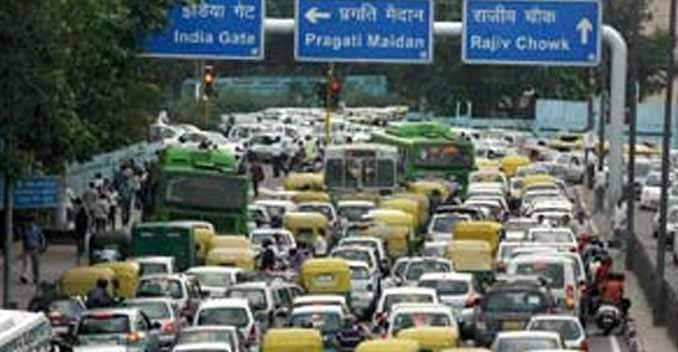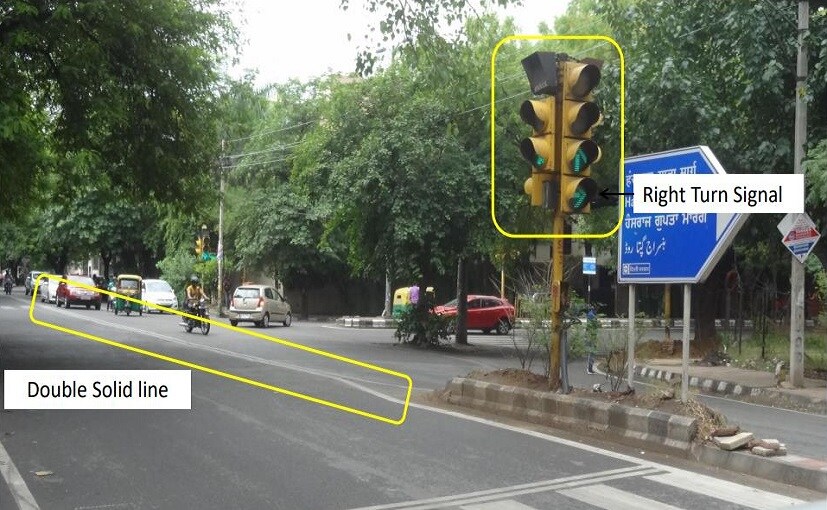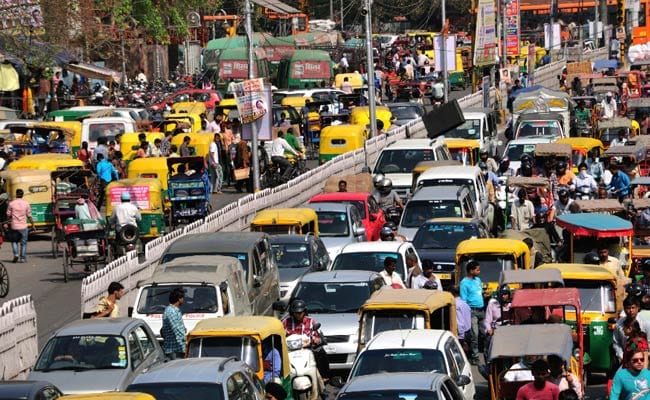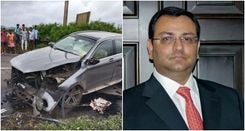Over 75 Per Cent Traffic signage In Delhi Faulty; Says IRTE Study

- Over 75 % of traffic signs in Delhi do not conform to IRC standards
- This inadvertently leads to motorists breaking traffic rules
- In 2016, Delhi had 1,630 road fatalities
Admit it! All of us, at one point in time, have broken traffic rules. Most of us would have been caught by the traffic cops and paid fine for the same! Some of us may have even tried to bribe the traffic cops in order to avoid paying the fines and the legal hassles. But what if you were caught and challaned by the traffic cops because the traffic signs or signals were faulty? Now that would definitely pinch you right?
Why we say this is because a study conducted by Dr. Rohit Baluja, President, Institute Of Road Traffic Education says that over 75 per cent of the traffic signage is faulty in Delhi. IRTE did the study on 14 major roads in Delhi, which covered 85 kilometres and 1,514 traffic signals and signage. Of the traffic signage, at least 1,098 or 75 per cent of them were found to be faulty and not meeting the required standards. The study said the colour, size and shape code have been used interchangeably, which is not the correct way to go about it because it is making the road users cause traffic violations unknowingly.
 (Crossing over double white lines is a traffic violation and is punishable by law, Picture Credit: IRTE)
(Crossing over double white lines is a traffic violation and is punishable by law, Picture Credit: IRTE)There are quite a few places in Delhi, which have road signage but at the wrong places. There are so many road junctions where there is a traffic sign which says pedestrian crossing, but there is no zebra crossing actually. This is potentially dangerous for pedestrians and motorists alike.
Whenever you see double white lines in the middle of the road, it signifies that the people cannot cross over to the other side. The double white line is equivalent of a divider in the middle of the road. You would be breaking the laws if you crossed the double white lines. The section 170A of the Motor Vehicle Act in Particular, which calls for a fine of Rs. 500. But what if the marking was in the middle of an intersection? Where there is a traffic signal with a signal that allows you to take a right turn on green? Well, you would still be technically breaking a traffic rule, with absolutely no fault of yours!
 (The Primary Signal is way behind the stop line and the zebra crossing, a fundamental flaw)
(The Primary Signal is way behind the stop line and the zebra crossing, a fundamental flaw)Dr. Baluja said, "Primarily, everything which moves on to the road must have certain standards and codes of practice. The legislation of the road is based upon the standard practices of the environment. For example, if I say people must stop at a stop signal, then the signal must be made as per the standard. For example, jumping a signal means jumping a stop line. Now, the stop lines are not there and the signals are wrongly placed. You cannot effectively obey the law. So to obey the law, in the most practical and efficient manner, the road environment must be based upon certain practices as standardised within the legislation."
 (No road discipline and no respect for lanes, creates a major traffic problem)
(No road discipline and no respect for lanes, creates a major traffic problem)Till 2016, Delhi had a total of 88,27,431 registered cars and bikes. From 2011, the number of registered cars and bikes has grown by 27 per cent. The reported road fatalities in just the city of Delhi were 1,622. This is more than the annual road fatalities of more than 122 countries which include UK, Australia, Spain, Greece, Portugal etc. Just to throw light on this, one particular traffic junction at Govindpuri in South Delhi itself sees close to 5,000 violations in just a single day.
So, there you go! If the state of affairs on Delhi roads is not rectified, you just might end up paying a hefty fine only because the road and traffic signals are faulty! And not because you were at fault, necessarily! With the updated Motor Vehicle Act on the anvil, the concerned authorities really need to rectify the misgivings at the earliest. Because, the only people who stand to suffer are hapless motorists.
Data Source: Institute Of Road Traffic Education, Delhi
Trending News
 3 mins readWill The Kawasaki W230 Be Launched In India?
3 mins readWill The Kawasaki W230 Be Launched In India?
Latest News
 Jaiveer Mehra | Dec 26, 2025India-Spec New Renault Duster Teased Ahead Of Jan 26 DebutA new teaser video provides brief glimpses of the upcoming all-new SUV which seems to get some notable styling differences over its global sibling.1 min read
Jaiveer Mehra | Dec 26, 2025India-Spec New Renault Duster Teased Ahead Of Jan 26 DebutA new teaser video provides brief glimpses of the upcoming all-new SUV which seems to get some notable styling differences over its global sibling.1 min read Jaiveer Mehra | Dec 26, 2025New Mahindra XUV 7XO Teaser Confirms 540 Degree CamerasLatest teaser video confirms the SUV will get the new 540 degree camera set-up from the XEV series as well as a few other features.1 min read
Jaiveer Mehra | Dec 26, 2025New Mahindra XUV 7XO Teaser Confirms 540 Degree CamerasLatest teaser video confirms the SUV will get the new 540 degree camera set-up from the XEV series as well as a few other features.1 min read car&bike Team | Dec 24, 2025Updated Bajaj Pulsar 150 Launched At Rs 1.09 Lakh: Gets LED Lighting, New ColoursThe Pulsar 150 is offered in three variants with prices topping out at Rs 1.15 lakh (ex-showroom).2 mins read
car&bike Team | Dec 24, 2025Updated Bajaj Pulsar 150 Launched At Rs 1.09 Lakh: Gets LED Lighting, New ColoursThe Pulsar 150 is offered in three variants with prices topping out at Rs 1.15 lakh (ex-showroom).2 mins read Janak Sorap | Dec 24, 20252026 Kawasaki Ninja 650 Launched at Rs 7.91 LakhWith E20 compliance, the 2026 Ninja 650 receive a new colour update and a premium price tag.1 min read
Janak Sorap | Dec 24, 20252026 Kawasaki Ninja 650 Launched at Rs 7.91 LakhWith E20 compliance, the 2026 Ninja 650 receive a new colour update and a premium price tag.1 min read Jafar Rizvi | Dec 24, 2025Listed: Car Manufacturers That Will Hike Prices From January 2026Based on the announcements made so far, the price increase across car models is expected to range between 2 and 3 per cent.3 mins read
Jafar Rizvi | Dec 24, 2025Listed: Car Manufacturers That Will Hike Prices From January 2026Based on the announcements made so far, the price increase across car models is expected to range between 2 and 3 per cent.3 mins read car&bike Team | Dec 24, 2025KTM RC 390 Discontinued Globally, Remains On Sale In IndiaThe KTM RC 390 will continue to be offered on sale in India, where it is manufactured and there’s still strong demand for the model.2 mins read
car&bike Team | Dec 24, 2025KTM RC 390 Discontinued Globally, Remains On Sale In IndiaThe KTM RC 390 will continue to be offered on sale in India, where it is manufactured and there’s still strong demand for the model.2 mins read
 Jafar Rizvi | Dec 24, 2025MG Windsor EV 38 kWh Long-Term Report: IntroductionThe Windsor EV has joined our garage, and before it settles into daily duty, I took it out to get a sense of what living with an electric car is like.4 mins read
Jafar Rizvi | Dec 24, 2025MG Windsor EV 38 kWh Long-Term Report: IntroductionThe Windsor EV has joined our garage, and before it settles into daily duty, I took it out to get a sense of what living with an electric car is like.4 mins read Seshan Vijayraghvan | Dec 23, 20252026 Kia Seltos Review: Formula Is Spot On, But Is The Timing Right?The 2nd-gen Kia Seltos has arrived, but it has the challenge of facing strong rivals like the Victoris and Sierra. The question is simple - Does it still have what it takes?9 mins read
Seshan Vijayraghvan | Dec 23, 20252026 Kia Seltos Review: Formula Is Spot On, But Is The Timing Right?The 2nd-gen Kia Seltos has arrived, but it has the challenge of facing strong rivals like the Victoris and Sierra. The question is simple - Does it still have what it takes?9 mins read car&bike Team | Dec 26, 2025Tata Punch EV Long-Term Second Report: Highway Performance, Pros & ConsAfter a week of living with the Tata Punch EV Long Range—including a proper Mumbai-Nashik highway test—we've learned what this little electric SUV is really made of.1 min read
car&bike Team | Dec 26, 2025Tata Punch EV Long-Term Second Report: Highway Performance, Pros & ConsAfter a week of living with the Tata Punch EV Long Range—including a proper Mumbai-Nashik highway test—we've learned what this little electric SUV is really made of.1 min read Seshan Vijayraghvan | Dec 22, 20252026 Tata Harrier & Safari 1.5 Hyperion Review: By The Power Of Petrol!The new Tata Harrier and Safari petrol packs a new 1.5-litre TGDI Hyperion engine, but is it an ideal alternative to the diesel version?7 mins read
Seshan Vijayraghvan | Dec 22, 20252026 Tata Harrier & Safari 1.5 Hyperion Review: By The Power Of Petrol!The new Tata Harrier and Safari petrol packs a new 1.5-litre TGDI Hyperion engine, but is it an ideal alternative to the diesel version?7 mins read Bilal Firfiray | Dec 19, 2025Maruti Suzuki e-Vitara Review: Worth The Wait?After a long wait, the first-ever electric Maruti Suzuki is here. It’s the e-Vitara, and it comes with a few promises. But arriving this late, is it worth the wait? Or is it a case of too little, too late?9 mins read
Bilal Firfiray | Dec 19, 2025Maruti Suzuki e-Vitara Review: Worth The Wait?After a long wait, the first-ever electric Maruti Suzuki is here. It’s the e-Vitara, and it comes with a few promises. But arriving this late, is it worth the wait? Or is it a case of too little, too late?9 mins read































































































































